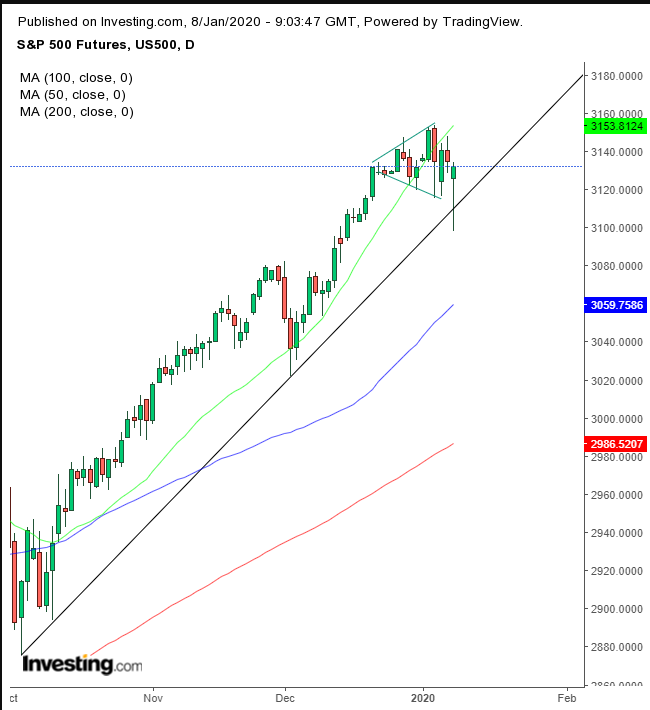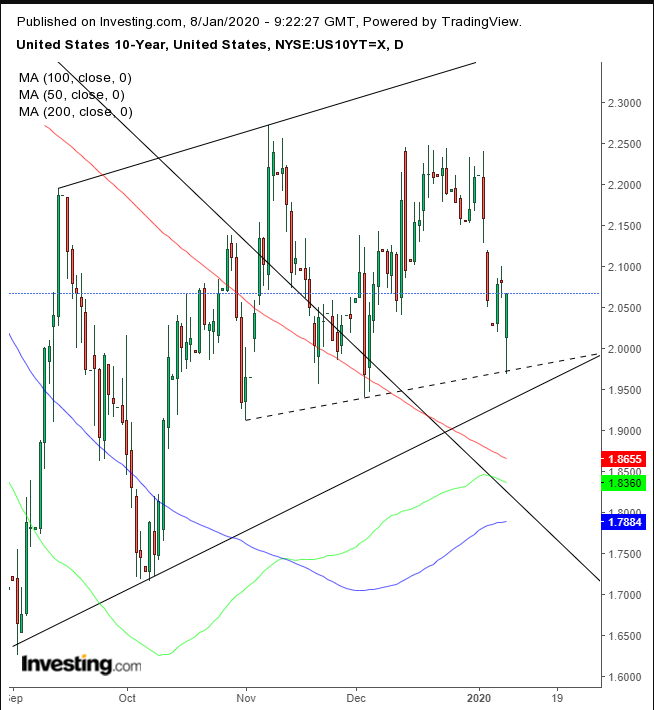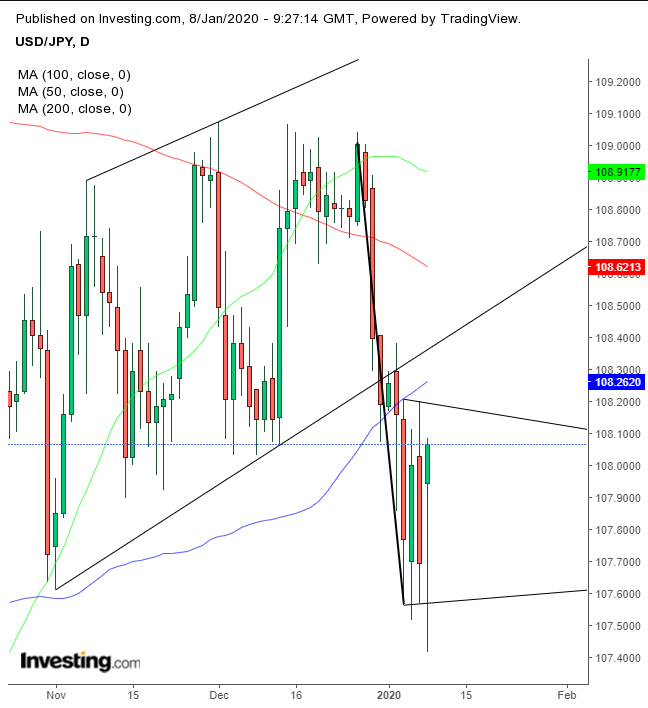- After Iranian retaliation, market volatility accelerated, but Iran, U.S. allay war fears
- Investors roll back into risk assets
- Still, gold continues to rise
Key Events
U.S. futures contracts, including for the Dow Jones, NASDAQ and S&P 500, slumped this morning and European stocks declined after an Iranian missile strike overnight on U.S. forces in Iraq.
Oil moved higher at the start of the Asian session, along with Treasurys; the yen fell, but gold and silver are surging.
Global Financial Affairs
U.S. contracts dropped sharply earlier today after Iran struck two American military basis in Iraq. However losses were trimmed somewhat once Teheran clarified they weren't looking for a full-on war but had delivered a "slap in the face" to the U.S. Further settling markets for the moment: President Donald Trump announced that “all is well.”
The rapid recovery of U.S. futures shows incredible resilience. Could investors be keeping their nerves in check because they have faith in the strength of the U.S. economy? Perhaps.
If you're a foreign investor, the U.S. market is certainly the place to be. However, there is something else at play as well. When investors expect to be flush with cheap cash courtesy of the Federal Reserve, they’re more willing to ignore risk.
They're also more inclined to buy into positive rhetoric, thereby driving indices and assets higher. Case in point, the tortuous road to a U.S.-China trade deal. No matter how many times markets were disappointed, every time President Donald Trump signaled that maybe now it was finally going to happen, stocks skyrocketed—even after they'd been disappointed numerous times, when the President then turned around and decided to toughen his bargaining position versus China.

Technically, S&P 500 futures are developing a pennant continuation pattern. Today’s dip fell below the uptrend line since Oct. 3 but bounced right back up and into the pennant again.
Conversely, the STOXX Europe 600 Index was pressured by chemical and banking shares. Additionally, German Factory Orders disappointed expectations, sending the euro into a selloff.
Early Wednesday in Asia, major indices were all in the red. Japan’s Nikkei underperformed, (-1.57%), followed by China’s Shanghai Composite, (-1.22%), and South Korea’s KOSPI (-1.11%).

Yields, including for the benchmark U.S. 10-year Treasury note, jumped, as risk-off sentiment reappeared. Levels bounced off a support line in place since Nov. 1, right above the bottom of a rising channel since the Sept. 3 bottom. The 50 DMA turned around below the 200 DMA, bullish for Treasurys.

The USD/JPY gave up gains and weakened. Technically, the price returned to the top of a range after falling below a rising channel since November. Right now, odds are better for a downside breakout of the current range.
One of the market's star performers right now, however, may be gold. The precious metal, a global asset, has been fluctuating, driven by investors around the world who can't decide whether to wade into risk or trade on fear.

The asset most sensitive to escalating tensions in the Middle East, oil, trimmed almost all its gains, forming a powerful bearish shooting star. On the upside, the contract is still above the 200 DMA for a third day.
Up Ahead
- President Trump said he will make a statement Wednesday morning in the wake of the Iran attack.
- Federal Reserve officials Richard Clarida, John Williams, James Bullard and Charles Evans each speak on Thursday.
- The U.S. monthly Nonfarm Payrolls report is due out Friday.
Market Moves
Stocks
- The Stoxx Europe 600 Index is now up 0.02%.
- Futures on the S&P 500 Index recovered and are up 0.33%.
- Japan’s TOPIX dipped almost 1.4%.
- The Shanghai Composite Index declined 1.2%.
Currencies
Bonds
- The yield on 10-year Treasuries decreased two basis points to 1.80%.
- The yield on 2-year Treasuries fell two basis points to 1.52%.
- Britain’s 10-year yield gained less than one basis point to 0.793%.
- The yield on 10-year German bunds fell four basis points to minus 0.25%.
